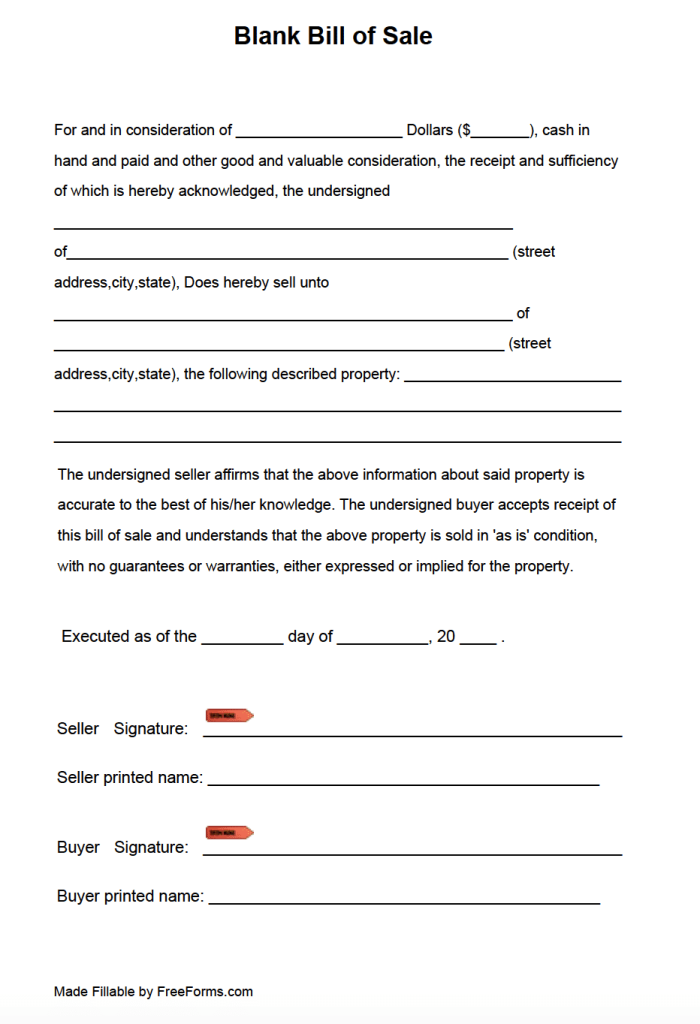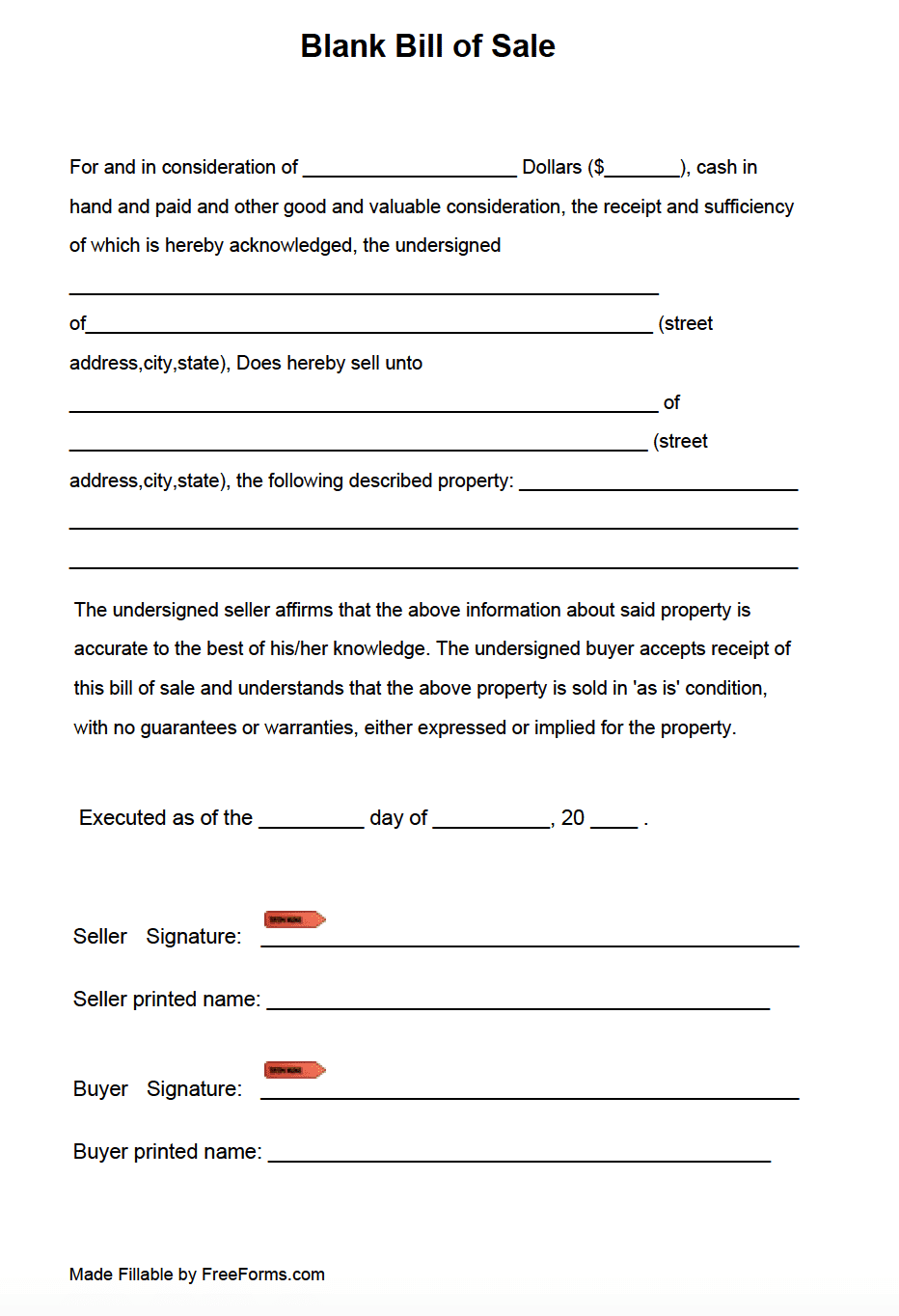a Blank Bill of Sale Form enacts an accord using a material document to commemorate the exchange of a given item for an expressed financial amount. This testament to the transaction can be invaluable to clear up any possible future dispute regarding ownership or liability. The contents of the enclosed information are comprised of seller, buyer, and sale item information as well as signatures and dates to indicate agreement and date of transfer.
What Is a Bill of Sale?
A bill of sale is the standard document accounting the sale of an item as well as identifying of important key elements pertaining to the item being sold, the buyer, the seller, and the purchase itself. It encompasses all identifying information surrounding the purchase and involved individuals for recording purposes. The form generally requires signatures, indicating an agreement between both parties and the terms of the contract. It is considered to be a legally binding contract and its authenticity is only further substantiated with endorsements from witnessing parties or a supervising notary public.
Why Use a Bill of Sale?
When exchanging an item of substantial value for a large dollar amount it is beneficial to create a physical record of the transaction should any aspect of the sale or transfer come into question down the line. The Bill of Sale provides the buyer of the property with a concrete certification to ownership after the sale has been conducted. For the seller of the item, the form produces a proof of transfer, confirming the release from any liability should the purchased item be used in an illegal manner or abandoned after the fact. In addition, this particular bill of sale supplies a clause stating the condition in which the item is received is on an ‘as is’ basis, with no expressed or implied warranty or guarantee. This provision stipulates that the item can not be returned for any reason and that the condition on the day of the sale is indicated to be acceptable upon the signing of the document by both parties. A Bill of Sale can also be a tangible piece of evidence to be utilized for tax purposes.
When Should I Utilize a Bill of Sale?
When the sale of an item involves a large sum of money, a Bill of Sale should be utilized to register the transaction. Having a written record is a secure decision for both the buyer and the seller, providing both with proof of the transpiring event. Many states obligate a buyer to furnish a Bill of Sale in order to register and title a motorized vehicle of any kind. Some Property items that may possibly be required to have a Bill of Sale for different types of registration are:
- Automobile
- Motorcycle
- Tractor
- Trailer
- RV
- Aircraft
- Boat
- Pet
The requirements may vary from state to state, so make sure bye calling your local government office to receive the latest updated information.
Properly Filling Out the Bill of Sale Form
Step 1 – Download the Adobe PDF. Fill out the form by following the indicated steps:
Step 2 – Sale Price Information – Input the purchase price int he following forms:
- Dollar Amount in Words
- Dollar Amount in Numbers
Step 3 – Seller Information – Enter the specified information regarding the seller of the property:
- Seller’s Name
- Seller’s Address
Step 4 – Buyer Information – Include the corresponding information about the buyer involved in the transaction:
- Buyer’s Name
- Buyer’s Address
Step 5 – Purchase Property Description: Write a description denoting the particular item being transferred in the sale. Ensure that you include all the facts pertinent to the item such as a specified year, color, make, model, or serial number if relevant.
Step 6 – Complete the section of the form to recording the date of sale in the following format in the provided spaces:
- Day
- Month
- Year (last two digits)
Step 7 – Once the informational portion of the form is completely finalized with the following signatures and prompted written names and dates:
- Date of Sale
- Seller’s Signature
- Seller’s Printed Name
- Buyer’s Signature
- Buyer’s Printed Name
- Date of Signatures



